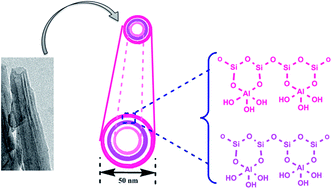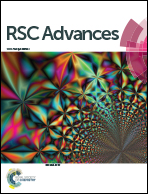Synthesis of polydopamine-coated halloysite nanotube-based hydrogel for controlled release of a calcium channel blocker
Abstract
A stimuli-triggered drug delivery vehicle has been synthesized by self-polymerization of dopamine (DA) on the outer surface of halloysite nanotubes (HNT) followed by gelation via alginate. DA in aqueous medium is made to adhere on outer surface of lumen and self-polymerizes in alkaline medium. Self-polymerized DA (PDA)-coated HNTs have been incorporated into alginate hydrogel and ionically crosslinked. Scanning electron microscope and transmission electron microscope images imply a coating of PDA of 12–17 nm in thickness on the HNT surface. The rheological behavior of the hydrogels as prepared can reveal their shear thinning character and they show sufficient gel strength (prominent difference between elastic and loss modulus). The thermal decay profile from thermogravimetric analysis implies the superior thermal stability with respect to pristine alginate. The action of PDA as an additional effective gelator has been noticed and confirmed by swelling trends in aqueous media. Drug loading has been achieved by two procedures: one is in situ loading and the other one is post-loading. It has been noticed that in situ loading of drug molecules during polymerization process of DA on HNT surface shows better controlled release feature than post-loading. Such release behavior was also tuned by altering the synthesis parameters.


 Please wait while we load your content...
Please wait while we load your content...